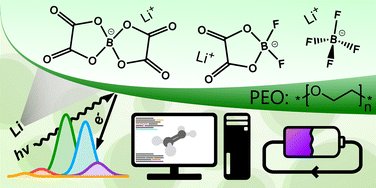J. Mater. Chem. A, 2024, Advance Article
DOI: 10.1039/D3TA07175H, Paper
DOI: 10.1039/D3TA07175H, Paper
 Open Access
Open Access This article is licensed under a Creative Commons Attribution 3.0 Unported Licence.
This article is licensed under a Creative Commons Attribution 3.0 Unported Licence.Edvin K. W. Andersson, Liang-Ting Wu, Luca Bertoli, Yi-Chen Weng, Daniel Friesen, Kenza Elbouazzaoui, Sophia Bloch, Ruslan Ovsyannikov, Erika Giangrisostomi, Daniel Brandell, Jonas Mindemark, Jyh-Chiang Jiang, Maria Hahlin
A limiting factor for solid polymer electrolyte (SPE)-based Li-batteries is the functionality of the electrolyte decomposition layer that is formed at the Li metal anode during battery operation.
To cite this article before page numbers are assigned, use the DOI form of citation above.
The content of this RSS Feed (c) The Royal Society of Chemistry
A limiting factor for solid polymer electrolyte (SPE)-based Li-batteries is the functionality of the electrolyte decomposition layer that is formed at the Li metal anode during battery operation.
To cite this article before page numbers are assigned, use the DOI form of citation above.
The content of this RSS Feed (c) The Royal Society of Chemistry

